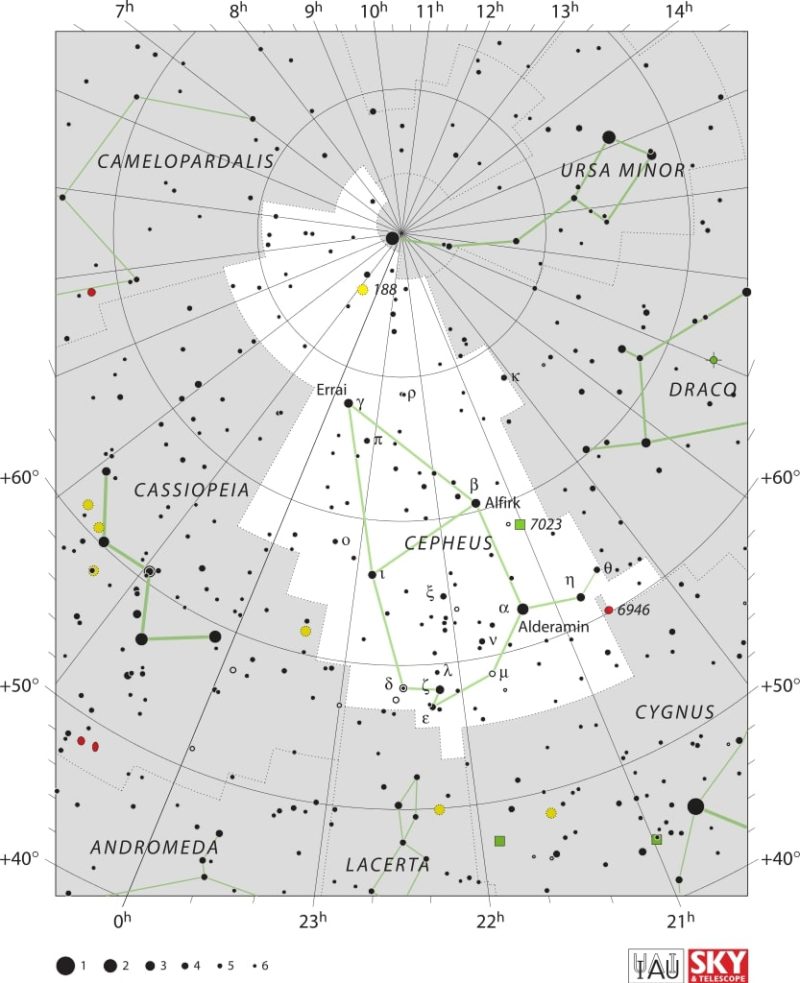NGC 7023: The Iris Nebula

NGC 7023, also known as the Iris Nebula, is a stunning celestial object that continues to captivate space enthusiasts around the world. In this article, we will embark on an exciting exploration of this mesmerizing cosmic entity, uncovering its unique beauty and intricate details.
Introduction to the NGC 7023
The Iris Nebula is a beautiful and intriguing reflection nebula, meaning that it reflects light from nearby stars. The nebula’s dusty core is surrounded by a bright blue reflection nebula, which is illuminated by a young star (HD 200775) in its formative years. Its name comes from its flowery appearance, which resembles the iris flower.
Technically the designation NGC 7023 refers only to the open cluster within the Iris Nebula, not the whole nebula, however the two are often used interchangeably. Other designations for the nebula include: LBN487, Caldwell 4, and Cr 429.
Iris Nebula Location
The NGC 7023 cluster and Iris Nebula are located 1,300 light-years away in the constellation of Cepheus, near the stars T Cephei and Beta Cephei (Alfirk). The nebula spans over six light-years in diameter.

Scientific Significance of the Iris Nebula
The Iris Nebula, is a breathtakingly beautiful nebula but its significance goes beyond its aesthetic appeal. The nebula is a prime target for scientific study due to its unique properties. Its dust clouds and gas pockets offer insight into the formation and evolution of stars.
In fact, NGC 7023 has been extensively studied in the infrared spectrum, revealing the presence of complex organic molecules such as polycyclic aromatic hydrocarbons. These molecules are essential building blocks of life and their presence in NGC 7023 suggests that similar organic molecules may be present in other parts of our galaxy. This discovery is of great interest to the field of astrochemistry.
Conclusion
In summary, the Iris Nebula showcases a stunning beauty that leaves us in awe. Its intricate features and structure provide us with a glimpse into the fascinating world of astronomy and the mysteries of the universe. As we continue to uncover the secrets of NGC 7023, we can only imagine what other wonders and mysteries await us in the vast expanse of space. Let us continue to appreciate and explore the beauty and complexity of this nebula and all that the universe has to offer.
Would you like to receive similar articles by email?





